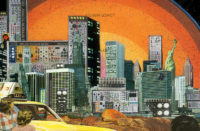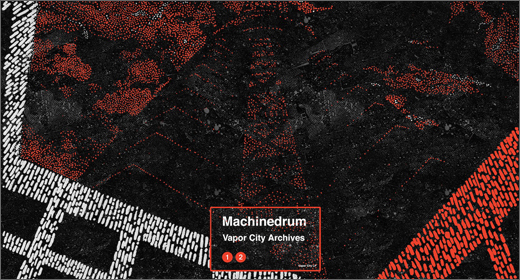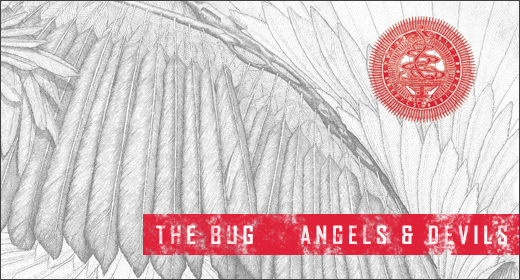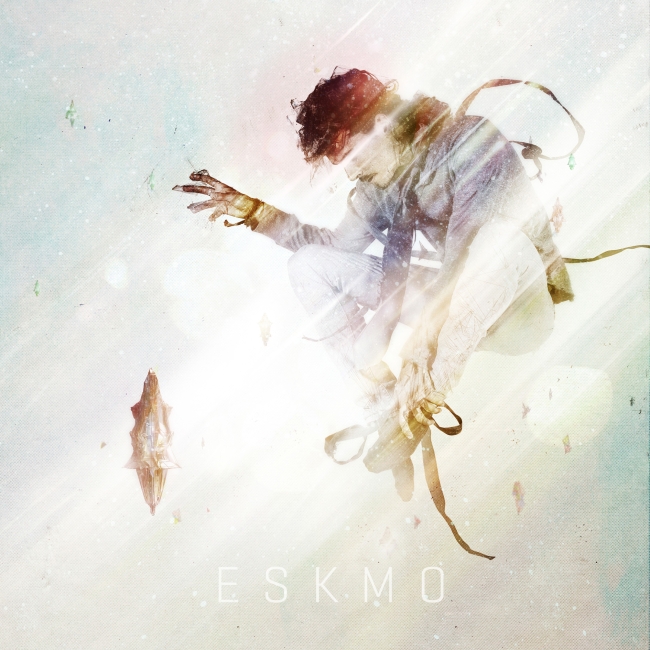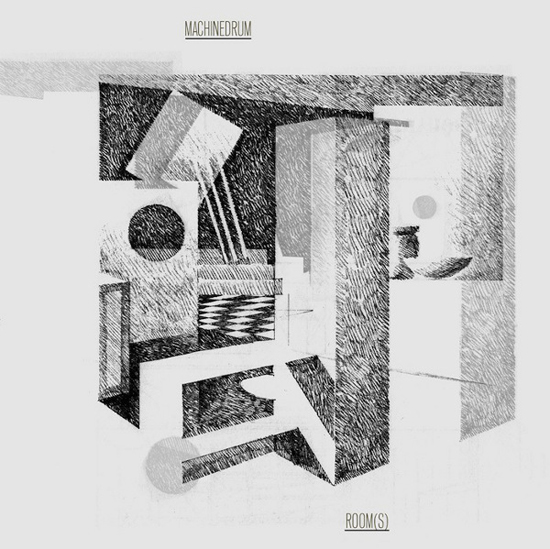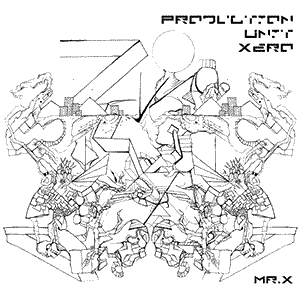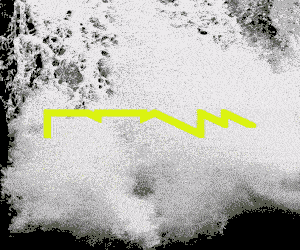Vapor City keeps an eye over its shoulder as it relentlessly pushes forward. Examined closely, (Travis) Stewart seems to have absorbed a huge range of influences, run them through a filter comprised of his own skills, taste and experience, and synthesized them into something uniquely his: a whole greater than the sum of its parts.
The story arc of Travis Stewart (aka Machinedrum, Syndrone, tstewart, etc.) should be familiar to most of the Igloo faithful: one of the original signees to Gabe Koch’s seminal Florida IDM label m3rck Records, Stewart produced early glitch-hop masterworks like “Izy Rael” and “Half the Battle,” then moved across the pond and began delivering slabs of garage-influenced techno as half of Sepalcure and under his Machinedrum name for Planet Mu. Fast-forward to 2013 and the release on Ninja Tune of the artifact under question today: Vapor City.
Many electrons have been spilled in online discussions of the stylistic evolution in evidence on this album. The detuned rn’b/ragga vocal samples, cthonic sub-bass, and murky, churning percussion lines propelling the opener “Gunshotta” and subsequent entries like “SeeSea” and “Vizion” definitely evoke a certain South London producer’s signature sound—three syllables, rhymes with “Carry-All”—but to think the album is only a clone of the audio palette of the moment is to miss the point. Examined closely, Stewart seems to have absorbed a huge range of influences, run them through a filter comprised of his own skills, taste and experience, and synthesized them into something uniquely his: a whole greater than the sum of its parts.
In addition to the Hyperdub elements I mentioned above, the mélange of styles fed into the beat blender starts producing magic in the second track “Infinite Us,” which starts off with piano house arpeggios and a clipped, staccato kick/hi-hat pattern that suddenly turns left into well-mannered Bukem jungle. A fleeting female vocal and some dogwhistle-frequency builds backing a plucked harp: the layers keep piling on until they climax, then roll away into the final echoing refrain. There’s so much going on that it’s impossible to regard this as a rip-off or homage; like a Luke Vibert or DJ Shadow excursion, the elements are ripped out and recontextualized into something new. This theme is repeated with variations on “Center Your Love,” “Rise N Fall” and “Eyesdontlie.” Each introduces different elements but remains recognizably connected to this maximalist aesthetic. (The interlude on “Center your Love,” by the way, warms my IDM-nerd heart with its evocation of Urban Biology-era Machinedrum pads.)
There’s one final motif of note, which I’ll coin neo-retro-synthpop. I first became aware of this bright, unapologetically synthetic vibe via Rustie’s “Glass Swords” album, but no doubt there are earlier examples. The characteristics Stewart employs on “U Still Lie,” for example, are a fat-sounding 80s arpeggiated bass synth, a machine-y drum machine, and pads that wouldn’t be out of place on the soundtrack to an “Airwolf” TV show reboot. The thing that differentiates it from a purely self-indulgent nostalgia trip is the precision and placement of the percussion elements. “Dont 1 2 Love U,” for example, throws down an intricate hi-hat pattern behind on these very traditional electro drum kit sounds. It just wouldn’t have been possible to do this with an actual 808: it took the sophisticated software simulation of a (relatively) primitive electronic instrument to make these tracks possible.
And that statement, more generally, summarizes my understanding of the work Stewart’s laid upon us ‘heads: elements and influences from diverse genres and earlier times, recontextualized and reinvigorated to present something new under the sun. Vapor City keeps an eye over its shoulder as it relentlessly pushes forward.
Vapor City is available on Ninja Tune.
[itunes id=”679609284″]






